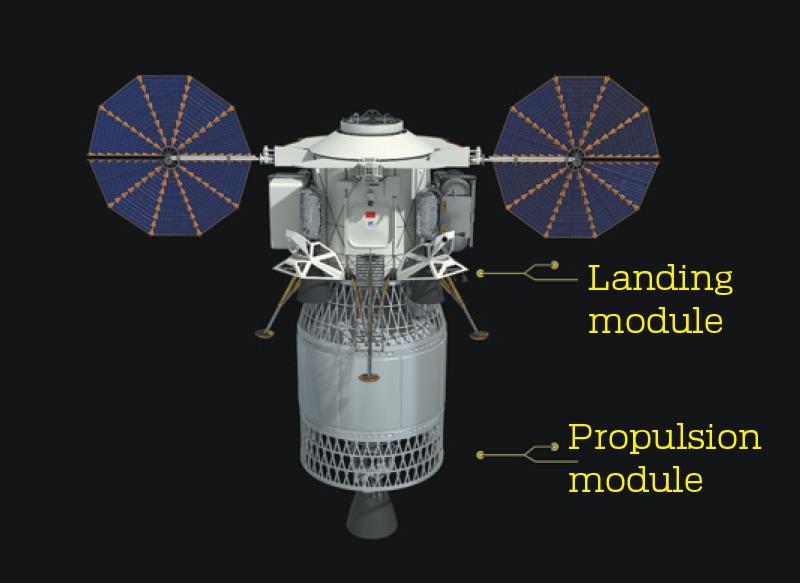Manned lunar lander is called Lanyue, crew ship is Mengzhou
 Simulated photos of manned lunar lander Lanyue. (PROVIDED TO CHINA DAILY)
Simulated photos of manned lunar lander Lanyue. (PROVIDED TO CHINA DAILY)
China unveiled on Saturday the names of its manned lunar lander and new crew spaceship.
A news release from the China Manned Space Agency said the lunar lander that will carry Chinese astronauts to the moon's surface has been named Lanyue, or Embracing the Moon, a term that first appeared in a poem written by the late Chairman Mao Zedong in 1965.
The term lanyue symbolizes the Chinese people's aspirations for and confidence in exploring the universe and the moon, it said.
The new crew spaceship has been named Mengzhou, or Dream Vessel, which represents its responsibility for fulfilling the Chinese nation's dream of landing on the moon to start a new journey of space adventure, the agency said.
READ MORE: Chinese lunar lander, new crew spaceship names revealed
It noted that there will be two models of the Mengzhou — one will be used to transport astronauts to the moon while the other will replace the current spaceship Shenzhou to ferry crew members between Earth and the Tiangong space station, which has been orbiting around the planet for nearly three years.
The names were picked by a group of experts from nearly 2,000 proposals solicited from the public.
 Simulated photos of spaceship Mengzhou.
(PROVIDED TO CHINA DAILY)
Simulated photos of spaceship Mengzhou.
(PROVIDED TO CHINA DAILY)
Currently, the research and development of the Lanyue, the Mengzhou and the super-heavy-lift carrier rocket Long March 10 are progressing well, the release said.
China has announced its plans for conducting its first manned mission to the moon around 2030.
According to mission planners, the Lanyue lunar lander will have two parts — a landing section and a propulsion section — and will weigh nearly 26 metric tons. It will accommodate two astronauts and a 200-kilogram rover.
ALSO READ: Shenzhou XVII taikonauts send CNY greetings from space
The Mengzhou spacecraft will also consist of two major components — a reentry module that will house astronauts and serve as the control center for the entire craft during spaceflight, and a service module that will contain power and propulsion systems. The vehicle will be nearly 9 meters long and 4.5 meters in diameter, and will weigh 22 metric tons.


